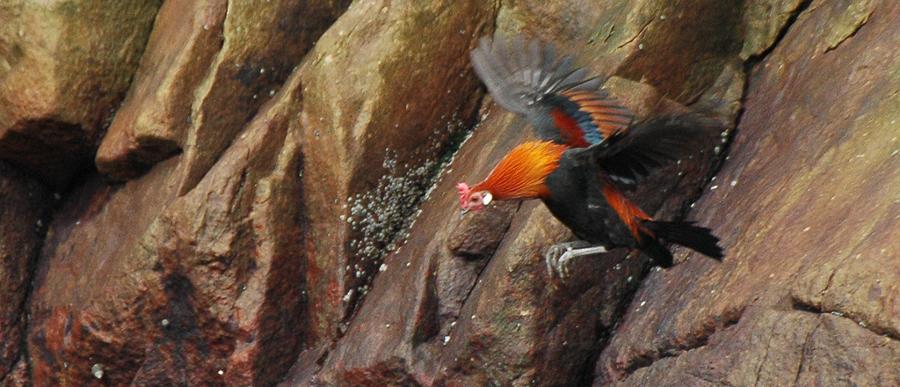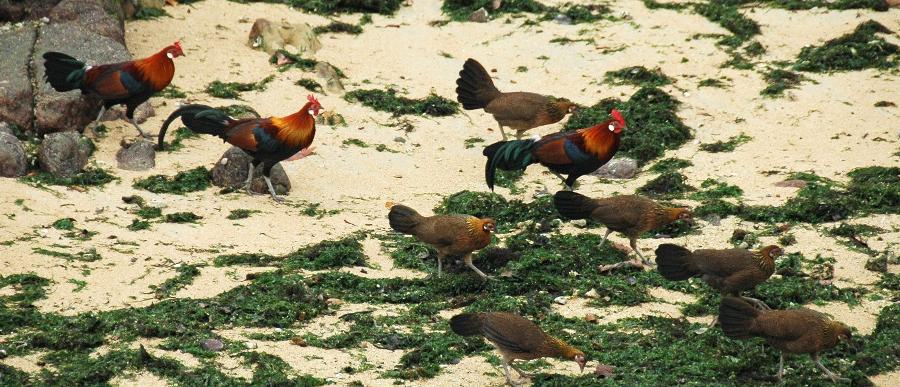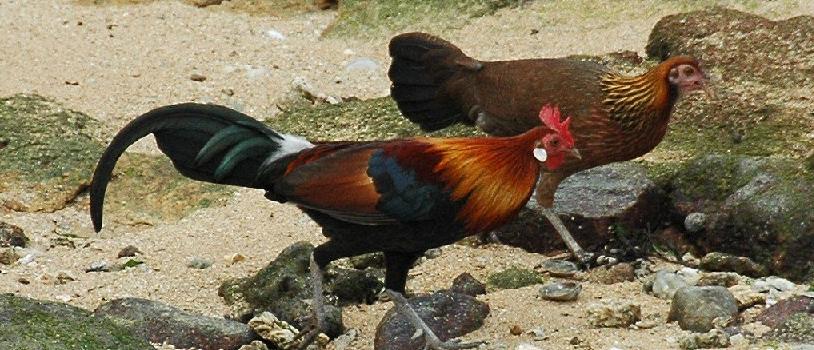Population of wild chickens at Pasir Ris Park estimated to be about 50: NParks
www.channelnewsasia.com
SINGAPORE: The wild chicken population at Pasir Ris Park is estimated to be about 50, the National Parks Board (NParks) said on Monday (Nov 7).
Last week, Shin Min Daily News reported that an estimated 200 chickens were at the park, citing a frequent visitor who fed the chickens there.
NParks group director of parks Chia Seng Jiang provided the estimated figure in response to CNA's queries and added that wild chickens are a fixture in green spaces around the country.
"Free-ranging chickens can be seen in some of our parks and gardens, including Pasir Ris Park," Mr Chia said.
"There has always been a population of free-ranging chickens in Pasir Ris Park, especially near the mangrove area."
Mr Chia urged the public not to feed the wild chickens as it leads to overpopulation.
"Additionally, the feeding of all animals, including chickens, is prohibited in NParks-managed green spaces under the Parks and Trees Act," he said.
Leftover food from feeding can also attract pests, like rats, that carry diseases and pose a risk to public health, Mr Chia said.
He added that the public can also help to mitigate wild chicken population growth and congregation issues by ensuring that they dispose of food scraps properly.
In addition to its prohibition under the Parks and Trees Act, the feeding of wild animals is also prohibited under the Wildlife Act without the written approval of the director-general of wildlife management.
In his statement, Mr Chia said that NParks "takes a holistic community- and science-based approach towards management of animals, including free-ranging chickens".
This includes incorporating studies on understanding the population ecology of the birds, such as roosting and movement patterns.
NParks also looks at the risks that these animals might pose to public health and safety through the diseases they may carry,
Other measures include removing food sources made available by humans, educating the public on not releasing or feeding wild chickens, habitat modification and population control, Mr Chia said.
"There is no single management approach that will suit all issues related to free-ranging chickens," he added.
www.channelnewsasia.com
SINGAPORE: The wild chicken population at Pasir Ris Park is estimated to be about 50, the National Parks Board (NParks) said on Monday (Nov 7).
Last week, Shin Min Daily News reported that an estimated 200 chickens were at the park, citing a frequent visitor who fed the chickens there.
NParks group director of parks Chia Seng Jiang provided the estimated figure in response to CNA's queries and added that wild chickens are a fixture in green spaces around the country.
"Free-ranging chickens can be seen in some of our parks and gardens, including Pasir Ris Park," Mr Chia said.
"There has always been a population of free-ranging chickens in Pasir Ris Park, especially near the mangrove area."
Mr Chia urged the public not to feed the wild chickens as it leads to overpopulation.
"Additionally, the feeding of all animals, including chickens, is prohibited in NParks-managed green spaces under the Parks and Trees Act," he said.
"Free-ranging chickens are capable of sourcing for food in their habitat and do not require food from humans to survive."Leftover food from feeding can also attract pests, like rats, that carry diseases and pose a risk to public health, Mr Chia said.
He added that the public can also help to mitigate wild chicken population growth and congregation issues by ensuring that they dispose of food scraps properly.
In addition to its prohibition under the Parks and Trees Act, the feeding of wild animals is also prohibited under the Wildlife Act without the written approval of the director-general of wildlife management.
In his statement, Mr Chia said that NParks "takes a holistic community- and science-based approach towards management of animals, including free-ranging chickens".
This includes incorporating studies on understanding the population ecology of the birds, such as roosting and movement patterns.
NParks also looks at the risks that these animals might pose to public health and safety through the diseases they may carry,
Other measures include removing food sources made available by humans, educating the public on not releasing or feeding wild chickens, habitat modification and population control, Mr Chia said.
"There is no single management approach that will suit all issues related to free-ranging chickens," he added.









